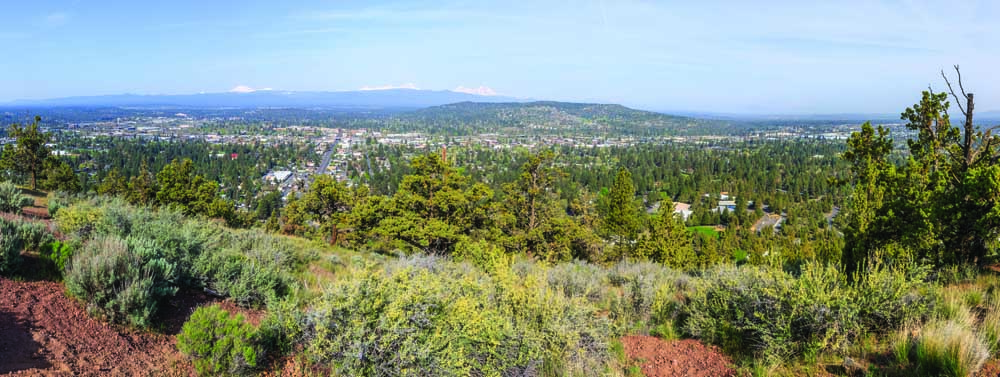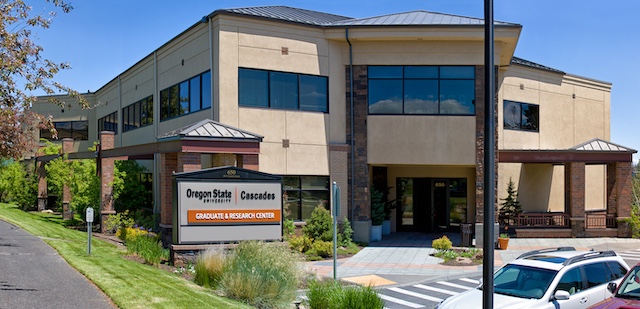Bend Chamber Real Estate Breakfast
Published 12:00 am Saturday, May 2, 2015

- Bend Chamber Real Estate Breakfast
The primary focus at the 2015 Bend Chamber Real Estate Forecast Breakfast was Bend’s urban growth boundary (UGB) and its impact on Bend and surrounding communities. Each year, the breakfast brings together individuals from all aspects of the real estate and housing industry, including government officials, realtors and builders.
The purpose of the breakfast is to put these diverse players in the same room, at the same tables, at the same time to discuss the future of the city’s real estate growth.
Trending
The UGB discussion had been touched on in years prior, but with the state of new housing and commercial development in Bend at a near standstill due to lack of available lands, the questions are picking up steam.
What are the specific tax lots going to be? What are the codes and class designations? What is going to be the future length of review? These were all questions being posed to the discussion panel in the last half hour of the breakfast, but first, Brian Fratzke, of Fratzke Commercial Real Estate Advisors, opened the presentation with a brief history of the UGB.
Oregon was the first to adopt a statewide UGB under Gov. Tom McCall. In 1973, McCall persuaded the Oregon Legislature to adopt the UGB. It was his view that Oregon’s unique natural resources, both for recreation and agricultural purposes, would be lost to urban sprawl. With a mix of political allies that included groups of both farmers and environmentalists, McCall pushed into legislation new guidelines that would require each city and county in Oregon to put into place long-range plans to address future growth. In short, each city and county in Oregon, including Bend, has a UGB that designates areas of higher and lower land density usage.
“In Hillsboro, the UGB is what makes it possible for Intel, the area’s largest employer, to be across the street from a wheat field,” said Fratzke.
And here in Bend, it’s what allows us to be hiking the Tumalo Falls trail or mountain biking Phil’s Trail, and minutes later be downtown for a lunch appointment.
Even with the recent real estate market crash, and the dip in the economy at large, Bend’s population has still continued to grow at unforeseen rates, having more than quadrupled in the last 20 years. This has created land shortage for both housing and commercial development, as well as usable areas for schools and parks for the city’s expanding population.
Trending
Following a state remand to an earlier 2009 UGB expansion proposal, an extension was filed with the Land Conservation and Development Commision (LCDC) to complete the remand by June 2017. The remand requires that the UGB expansion proposal adheres to state law while more heavily involving Bend’s citizens and planning appropriately for infrastructure, such as transportation, utilities and the like. And all of this must take into account the area’s natural beauty and resources.
Several Technical Advisory Committees have been formed to research these needs and make recommendations on both residential and employment issues. The Boundary TAC, for instance, is not only evaluating how to best develop the land, but also discussing irrigation concerns, wildfire risk, whether to develop east or west, as well as agricultural concerns and the preservation of elk habitat.
While there is debate as to where and how to expand, most plans have Bend’s UGB expansion at about 2,000 acres, with the land being proportionately divided between residential, commercial, public and other usages.
Simply put, with a mere 1.5 percent vacancy rate, demand is far exceeding supply, and Bend’s growing middle class is being priced out of housing.
“People are still moving here,” said Fratzke, “because it’s still cheap compared to the Gaslamp district in San Diego, La Hoya, or Australia, but where does that leave Bend’s working class?”
Furthermore, commercially, both existing and new business ventures, could seek to build elsewhere where leasable commercial property is more affordable, taking Bend’s jobs elsewhere.
“The problem is, there’s no quick fix,” added Ron Ross, of Compass Commercial Real Estate Services. “I keep telling my clients, that the reality is, on the ground, land is simply not available, at any price.”
“It’s just a really complex problem, that we’re all trying to solve,” added Brian Rankin, Bend’s city planning manager. “How do we boil these complexities down to the core values of this community and trade off’s? There’s no easy answer.”
The future of Bend’s growth and real estate, therefore, depends on a resolution of the UGB — and while there may be no easy answer, it’s something to strive for.
“It’s a small town, yes,” said Fratzke, “but one full of great thinkers, highly educated metropolitan people, and we have to get involved in solving this issue because it affects us all.”








